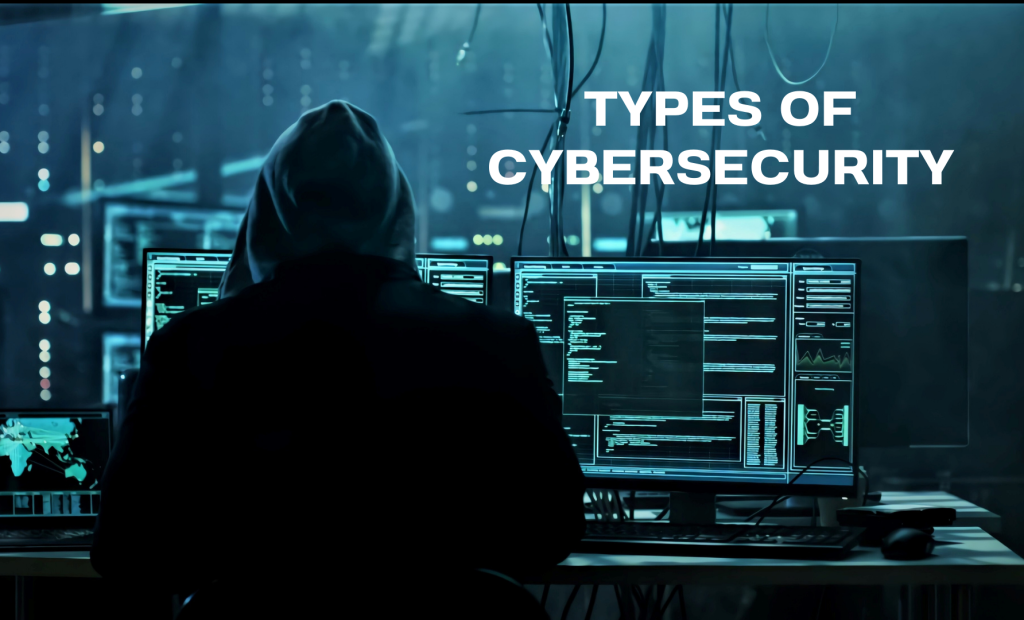
Table of Contents
ToggleWelcome to the ultimate guide on mastering cybersecurity! In this article, we will look into the key principles that serve as the foundation for digital defence. We will explain to you everything you need to understand about cybersecurity strategies for protecting yourself against cyber attacks. Join us as we explain the complexities of cybersecurity and equip you to safeguard your digital assets.
Brief History of Cyber Security
The Atanasoff-Berry Computer is the first digital computer that emerged in 1943 and the term “hacking” transitioned from manipulating train sets to early computers.

The birth of ARPANET, the first computer worm and the development of antivirus solutions occurred in the 1970s. The 1980s witnessed a surge in cyberattacks and the rise of antivirus programs.
The 2000s witnessed the exponential growth of the internet and the emergence of cloud computing, leading to new cybersecurity challenges.
The attack surface expanded exponentially in the 2010s, with the emergence of DevOps introducing security gaps and vulnerabilities. With the launch of OpenAI’s ChatGPT in 2023 highlighting the potential for AI/ML technologies to enhance attackers’ toolsets.
Understanding Cybersecurity
Cybersecurity is like a digital shield that protects computers and data from cyber threats. It involves measures to prevent unauthorized access, data breaches, and attacks like viruses or hackers. Think of cybersecurity as locking your door to keep intruders out of your virtual home.

Cybersecurity principles are fundamental guidelines for safeguarding digital assets against threats like hacking and data breaches. Moreover, Cyber Defense offer practical strategies for securing personal information and online activities. This ensures a safer digital experience for everyone, from protecting passwords to identifying and avoiding suspicious email. .
- Malware, foreign attackers, or malevolent insiders are all potential sources of cyberattacks.
- Human errors (for example, a misconfiguration or a scripting/coding error), etc.
- Data loss and/or breach of privacy or secrets.
Types of cybersecurity
Here are some of the most popular Cybersecurity Principles areas, many of which overlap.

Business Continuity (BC)
Problems:
- IT interruptions due to human errors, equipment failures, or cyber attacks disrupt operations.
- Quick restoration of IT operations becomes challenging after such occurrences.
Solutions:
- Cybersecurity principles ensure appropriate planning for IT interruptions.
- Access restrictions and monitoring of vulnerabilities enhance resilience.
- Prompt restoration of IT operations becomes feasible with proactive measures.
Endpoint Security
Problems:
- Endpoints are vulnerable to malware attacks.
- Managing privileged access and detecting endpoint threats pose challenges.
Solutions:
- Cybersecurity principles ensure appropriate endpoint protection strategies.
- Implementation of anti-virus and endpoint detection technologies strengthens security.
- Privileged access management and endpoint response enhance defense mechanisms.
Identity and Access Management (IAM)
Problems:
- Ensuring only authorized digital identities have access to resources is complex.
- Authentication processes for accessing apps, data, and systems lack efficiency.
Solutions:
- Cybersecurity principles ensure robust rules and technologies for IAM.
- IAM solutions authenticate individuals and enforce access restrictions effectively.
- Strengthened IAM measures provide secure access to critical resources.
Major Cyber Threat Vectors

| Password Cracking | Password-based attacks entail guessing or stealing credentials (passwords, tokens, SSH keys, and DevOps secrets) in order to hijack accounts and obtain unauthorised access to data. |
| Malware Detection | Malware is malicious computer software designed to steal data or disrupting computers other equipment. Worms, trojans and spyware are some common forms of malware. |
| Ransomware Detection | Ransomware is software that locks up and encrypts files, then demands a ransom in return for removing the encryption and restoring access to the system owner. |
| Social Engineering | Criminals utilise smart impersonation strategies, phishing and other ways to deceive employees into sharing sensitive information, such as logins and passwords. |
| MFA Fatigue Attacks | A multi-factor authentication (MFA) fatigue attack is a social engineering assault tactic in which attackers send second-factor authentication requests to the victim’s email. |
Cyber Security Core Principles
Securing corporate systems for organisations requires numerous critical components. This includes evaluating IT systems and establishing secure identity and access control.

We will address essential parts of cybersecurity top principles below, providing insights on how to develop a robust defence against an ever-changing threat landscape.
1. Evaluate your existing IT system
Conduct a full assessment of your IT system, including hardware, software, and network components. Examine setups and user roles to better comprehend your organization’s digital world.
This rigorous mapping not only reveals possible weaknesses, but it also acts as the first step in establishing a strong cybersecurity plan.
Following a discovery audit, your organization may undertake a comprehensive gap analysis that goes beyond technical evaluations.
2. Adopt a risk-based approach to cybersecurity
When grading possible risks based on likelihood and effect, make judgements that are relevant to asset characteristics.
Tailoring your risk-based approach ensures that cybersecurity efforts are fine-tuned to meet the requirements of your corporate environment.
3. Manage and Protect Identities
Identity and access management (IAM) allows you to manage an identity’s complete lifecycle. Implement adaptive security mechanisms that take into account user behaviour.
Use phishing-resistant particularly for sensitive accounts and access. Mature identity threat detection capabilities enable continuous assessment of identity risk as well as quick detection of threats.
4. Securing Access Pathways
Secure all access pathways by implementing measures to protect access within and across networks. This entails securing access for both humans and machines.
Achieving this requires utilizing a combination of network security tools such as firewalls, as well as implementing privileged access management, including session monitoring and management.
5.Zero-trust environment
Zero-trust environment means never automatically trusting any person or device inside or outside your network. It secures access by verifying everyone and everything trying to connect to your systems, making it harder for hackers to infiltrate.
In the modern age of remote and mobile workforces, zero trust concepts are likely to enable safe access while limiting the dangers to highly sensitive resources.
This includes enforcing continuous authentication, using least privilege and adaptive access control and maintaining continual visibility who is doing what on your network.
Benefits of Cybersecurity

- Career Opportunities: The fast expansion and evolution of digital technology has generated a demand for cybersecurity professionals. Whether you’re interested in IT or security, the industry provides a wide range of opportunities that grow year after year.
- Compensation Scale: As your career progresses, your compensation will increase. The precise vertical you chose within cybersecurity might increase the total profits.
- Opportunities for growth: In an ever-changing technology context, cybersecurity experts are in a strong position for further advancement. As technology progresses, new cybersecurity concerns emerge, requiring new skill sets. This provides continual chances for professional advancement and specialisation.
- Sense of Purpose: Working in cybersecurity may create a strong sense of purpose. With the continued rise of cyber risks and several exciting business issues to tackle, you play an important role in protecting organisations. Contributing to an industry committed to defending people from a constantly evolving threat may provide a feeling of fulfilment.
Conclusion
By understanding the core principles of cybersecurity and adopting a proactive approach, organizations can effectively safeguard their digital assets and mitigate risks.
From evaluating IT systems to managing identities and securing access pathways, every step plays a crucial role in fortifying defenses against evolving threats.
With vulnerability scanning as your shield, you can thwart potential attacks and safeguard your digital assets from exploitation. Take the first step towards a more secure future today.





